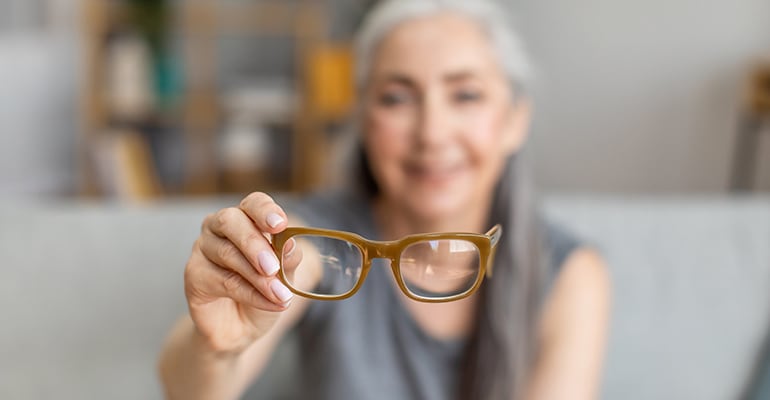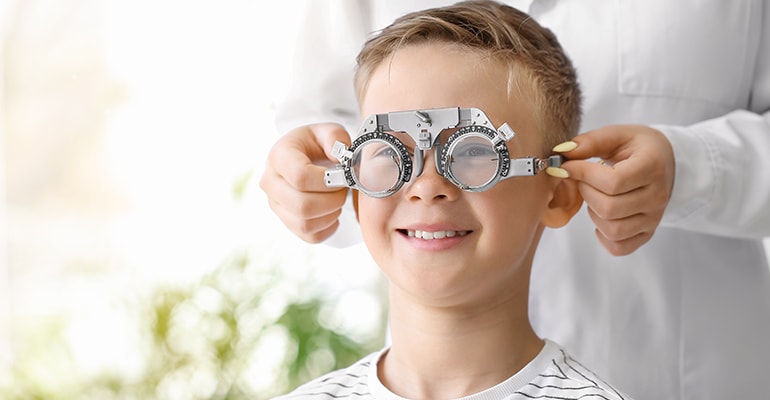Myopia:Causes, Symptoms And Correction
Sep 22, 2023
What Is Myopia?

Myopia, also known as nearsightedness, is a common refractive error of the eye that causes distant objects to appear blurry while close objects remain clear. This occurs when the eyeball is too long or the cornea (the clear front surface of the eye) is too curved, which causes light to focus in front of the retina instead of directly on it. Myopia can be corrected with eyeglasses, contact lenses, or refractive surgery. It is a common condition and can affect people of all ages, but it typically develops during childhood and adolescence.
Causes of Myopia?

Myopia is caused by the inability of light to focus properly on the retina. The retina is light-sensitive tissue located at the back of the eye and plays a key part in providing sharp vision. For vision to be clear, light must focus directly on the retina like a spotlight on a stage.
The eyeballs of a person with myopia are longer than average. This is usually because the eyeball itself is longer from front to back (called axial myopia). But in rare cases, it’s because the cornea or lens is too curved, or because one is positioned too closely to the other (called refractive myopia).
Regardless of what causes the eyeball to be longer than average, the result is the same: incoming light focuses in front of the retina instead of directly on it. This causes near vision to be in focus while distant vision is blurry.
There are a few things that can cause an eyeball to grow longer than average. Genetics: Myopia tends to run in families, suggesting that there may be a genetic component to the condition.
Environmental factors: Spending a lot of time doing close-up work, such as reading or using a computer, may increase the risk of developing myopia.
Lack of outdoor activity: Studies have shown that spending time outdoors, especially during childhood, may help reduce the risk of developing myopia.
Age: Myopia typically develops during childhood and adolescence, and may stabilize in early adulthood.
Other medical conditions: Certain medical conditions, such as diabetes, can increase the risk of developing myopia.
Symptoms of Myopia

The most common symptom of myopia, also known as nearsightedness, is difficulty seeing distant objects clearly. Other symptoms may include:
Squinting: People with myopia may squint to try to see distant objects more clearly.
Headaches: Straining to see distant objects can cause headaches, especially after prolonged periods of reading or computer use.
Eye strain: People with myopia may experience eye strain or fatigue, especially after prolonged periods of reading or computer use.
Difficulty driving: Myopia can make it difficult to see road signs or other objects while driving, especially at night.
Needing to sit closer to the TV or computer screen: People with myopia may need to sit closer to the TV or computer screen to see clearly.
Difficulty seeing in low light: Myopia can make it difficult to see in low light conditions, such as at dusk or in dimly lit rooms.
High myopia
It is defined as a refractive error of -6.00 diopters or more, meaning that objects at a distance appear blurry and out of focus.
People with high myopia have an elongated eyeball, which causes light to focus in front of the retina instead of on it. This can lead to a range of eye problems, including retinal detachment, macular degeneration, glaucoma, and cataracts. These conditions can cause permanent vision loss if left untreated.
High myopia is usually diagnosed during a comprehensive eye exam, which includes a visual acuity test and a dilated eye exam. Treatment options for high myopia include corrective lenses, such as glasses or contact lenses, and refractive surgery, such as LASIK or PRK. However, these treatments may not be suitable for everyone, and in some cases, more invasive procedures may be necessary to prevent or treat complications.
Myopia correction and management

Myopia correction and management typically involve the use of corrective lenses, such as glasses or contact lenses, and refractive surgery. Here are some common methods for correcting and managing myopia:
Glasses: Glasses are the most common and simplest way to correct myopia. They work by bending light as it enters the eye, so that it focuses correctly on the retina. Glasses can be prescribed for different activities, such as reading or driving, and can be made with different lens materials and coatings.
Contact lenses: Contact lenses are another option for correcting myopia. They work in the same way as glasses, but sit directly on the eye. Contact lenses can be made from different materials, such as soft or rigid gas permeable, and can be worn daily or for extended periods of time.
Refractive surgery: Refractive surgery is a more permanent solution for myopia correction. It involves reshaping the cornea, the clear front part of the eye, using a laser or other surgical tool. The most common types of refractive surgery for myopia are LASIK and PRK.
Lifestyle changes: Some studies suggest that spending more time outdoors and less time doing close-up work, such as reading or using electronic devices, may help slow the progression of myopia in children.
